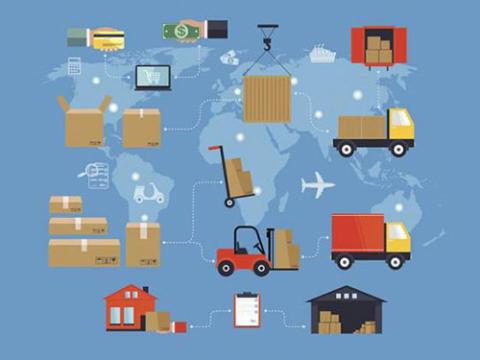Four steps to combatting apparel inventory delays

The days are getting longer, and many consumers have warmer weather on their minds.
As shoppers head to stores in search of new shorts, sandals and other spring essentials, retailers need to make sure they are prepared to meet their customers’ expectations. However, many retailers are still waiting on their spring inventory to make its way through the supply chain.
Supply chain challenges are persisting as new disruptions continue to arise – from the conflict in Ukraine to new lockdowns in China – as well as inflation and rising inequality hitting the discretionary spend more quickly. To succeed, now and in the future, here are four strategies retailers are increasingly implementing to minimize their risks.
Building resilient supply chains
The pandemic taught us the importance of resiliency, and the ongoing supply chain crisis is reinforcing it. An extensive BCG qualitative study of nearly 1,800 companies over 25 years shows that supply chains that are resilient outperform their competition by 30% in crisis period periods and nearly 16% in stable periods.
Resiliency can be built by a variety of solutions that push data and insights into upstream and downstream supply chain solutions that help retailers plan and prepare for multiple situations. The solutions can all be leveraged in collaborative scenario planning, which is the process and ability to consider evolving market conditions, understand their impact on the supply chain and develop cross-functional plans to best manage the risk – and even opportunities – created by supply chain disruptions.
Leveraging technology to guide strategy
Making changes to supply chain operations is no easy task, especially when the spring season is so close and there isn’t time to make sweeping changes. To make sure they are making decisions that are best for their organization’s unique needs, retailers can also leverage control tower capabilities as a crucial first step toward making strategic changes. Retailers can use control tower solutions to create a dashboard that highlights:
- All shipments going in or out of the region of conflict/disruption.
- Potential customer locations and partner locations that could be impacted.
- The inventory that would be affected by a certain decision.
- The dollar amount associated with the impact of their decision.
Artificial intelligence (AI) and machine learning (ML)- powered supply chain solutions offer end-to-end visibility and recommendations to help customers make clear and confident decisions that will help them get their items to stores on time, as well as know what items they do not need in stores to avoid unnecessary costs and effort.
These technologies also have the capability to model disruptions, predict impact and prescribe alternatives to mitigate negative impact.
Embracing proximate manufacturing
One of the biggest challenges facing retailers currently is supply chain instability in the regions that they route their products through or from. For example, many organizations continue to feel the impact of disruptions in Asia, which is one of the largest manufacturing and transportation hubs in the world. The latest lockdowns in Shanghai, the most extensive in two years, are expected to worsen the situation.
The practice of proximate manufacturing – also known as near-shoring – will continue to be an elevated priority based on these disruptions. This practice refers to when a company moves its operations to a country that’s closer to where the product will be sold, so it is not as costly or time-consuming to operate facilities and manufacture products.
Retailers are turning to near-shoring to diversify manufacturing of material and finished goods to address disruptions and balance demand on ports.In fact, according to a survey from Blue Yonder and Coresight Research, 65% of retailers established or expanded their local and domestic manufacturing sources in order to gain better control of their supply chain during the COVID-19 pandemic.
Refocusing on transportation management solutions
A lot of retail inventory is tied up when it is traveling between regions and across oceans. When transportation management solutions are powered by AI and ML, they can even be used for advanced issue anticipation, provide proactive actions and capture opportunities for changes.
For example, these systems can detect changes in carrier pricing, capacity availability and load requirement so retailers can proactively adjust as necessary. They can also be used to optimize container builds, routes, and lead times. For instance, retailers are now shipping goods made in Asia through ports in the Northwest and East coasts of the U.S. They found it is faster to go through new routes vs. waiting for the deals out of their regular ports.
When spring inventory does make landfall, it will be crucial for retailers to ensure their ground transportation is as efficient as possible. However, the ongoing driver shortage in the trucking industry is further exasperating the situation. Thankfully, transportation management solutions can help retailers rethink their load building and route planning while providing real-time visibility to what inventory is en route.
Leveraging a variety of these solutions that bring inventory closer to the point of local demand and build supply chain resiliency can help retailers have a successful shopping season, without getting stuck with sandals in the fall.





